Early Verdict
Plextor shoots for the stars again, but the only thing high on the S3C 2.5-inch SSD is the price. We really like the free software package, but the drive doesn't hit the high performance numbers we like to see. If the price comes down and you want an SSD with a DRAM buffer, the S3C should be a nice low-cost product for casual computer users.
Pros
- +
Excellent software package
- +
DRAM design
Cons
- -
Pricing in relation to the 850 EVO
- -
Low performance
- -
Low endurance
Why you can trust Tom's Hardware
Features & Specifications
3D NAND is the hot topic, but there is still room for planar NAND even as the latest in 3D technology ramps up. Most think that increased 3D NAND production signals the end for 2D products, but that isn't the case. Planar NAND is still cheaper to manufacture, and it's better suited for low capacity products due to its smaller die density. In time, 3D NAND will power most mainstream to enterprise systems, but some lower-cost entry-level SSDs will still use planar technology for at least the next year.
SATA has a few years left in it, too. While enthusiasts scour the web for the best price on the few remaining NVMe drives with MLC NAND, the rest of the world is just happy to find a good price for a SATA SSD. There are still a few high-performance SATA products on the market, but prices are steep. The NAND shortage has increased the cost of the most vital component, though, so the price gap between entry-level and mainstream products is shrinking.
Specifications



Plextor brings the new S3C series to market in three full-capacity models that range from 128GB to 512GB. This series ships in the 2.5-inch form factor, but Plextor's S3G M.2 2280 is a SATA model that shares similar specifications and components.
The S3C 2.5-inch drives achieve up to 550/520 MB/s of sequential read/write throughput. The 265GB model loses 10 MB/s of sequential write performance compared to the high-capacity model, and the 128GB steps down another 10 MB/s. All three drives come to market with different random performance specifications. The 128GB achieves 72,000/57,000 random read/write IOPS, but performance increases to 90,000/71,000 for the 256GB and 92,000/79,000 IOPS for the 512GB.
This series gives us our first look at both the SMI SM2254 controller and the new Sk Hynix 14nm planar TLC NAND. We know very little about the components. The controller supports Low-Density Parity Check (LDPC) error correction code and the S3C also uses an SLC buffer to increase performance during bursty write workloads.
The S3 designation is part of Plextor's new product naming scheme for SATA SSDs. The new lineup begins with the newly released S1 and includes the S2 and S3 we're testing today. Plextor has yet to release a product with 3D NAND, but it announced the M9Pe would come to market in 2018 with Toshiba's 3D BiCS NAND.
Pricing, Warranty & Endurance
We haven't seen the new S3C or S3G products listed for sale yet, but Plextor sent us the MSRP for both products. The 128GB SC3 drives start at just $51.99, and pricing scales up to $93.99 for the 256GB model and $186.99 for the 512GB. The company doesn't plan to release a 512GB-equivalent in the M.2 form factor, but the S6G 256GB M.2 model retails for $96.99.
Get Tom's Hardware's best news and in-depth reviews, straight to your inbox.
All S3 products come with a three-year warranty and an endurance limitation. This is where the series shows it's value-focused positioning. The 128GB drives only come with warranty support for up to 50TB of data writes. That increases to 70TB for both the 256GB and 512GB models. In contrast, the new Western Digital Blue 3D 500GB includes a 200TB rating at a similar price point.
Software
The S3 products work with Plextor's impressive software suite that goes well beyond the traditional "SSD Toolbox" software features. Plextor uses a monitoring software called PlexTools to view status updates, secure erase, and TRIM the drives. There are also three additional pieces of software.
- PlexVault
Plextor's PlexVault software provides you with a secure hidden partition and complete control of access privileges. Even if you share a computer with others, you can still store your private data via PlexVault.
- PlexCompressor
SSD storage capacity is always important. Plextor's PlexCompressor uses custom smart-compression technology that gives you more storage capacity without impacting the user experience and system performance.
- PlexTurbo
PlexTurbo is an intelligent SSD RAM caching solution that leverages system RAM to accelerate SSD storage performance. It boosts the service life of the SSD while vastly accelerating access performance (32GB recommend DRAM capacity).
Packaging
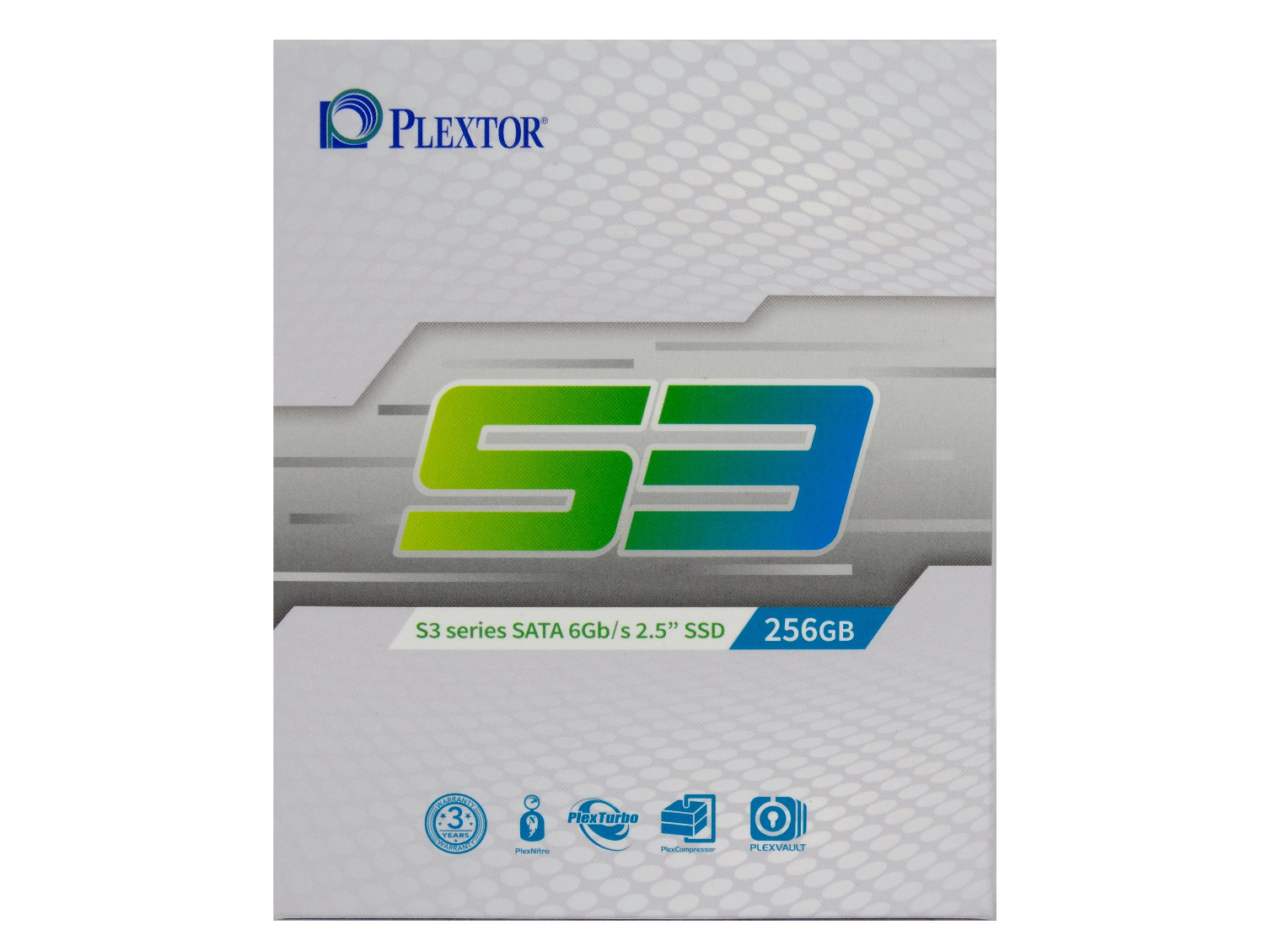
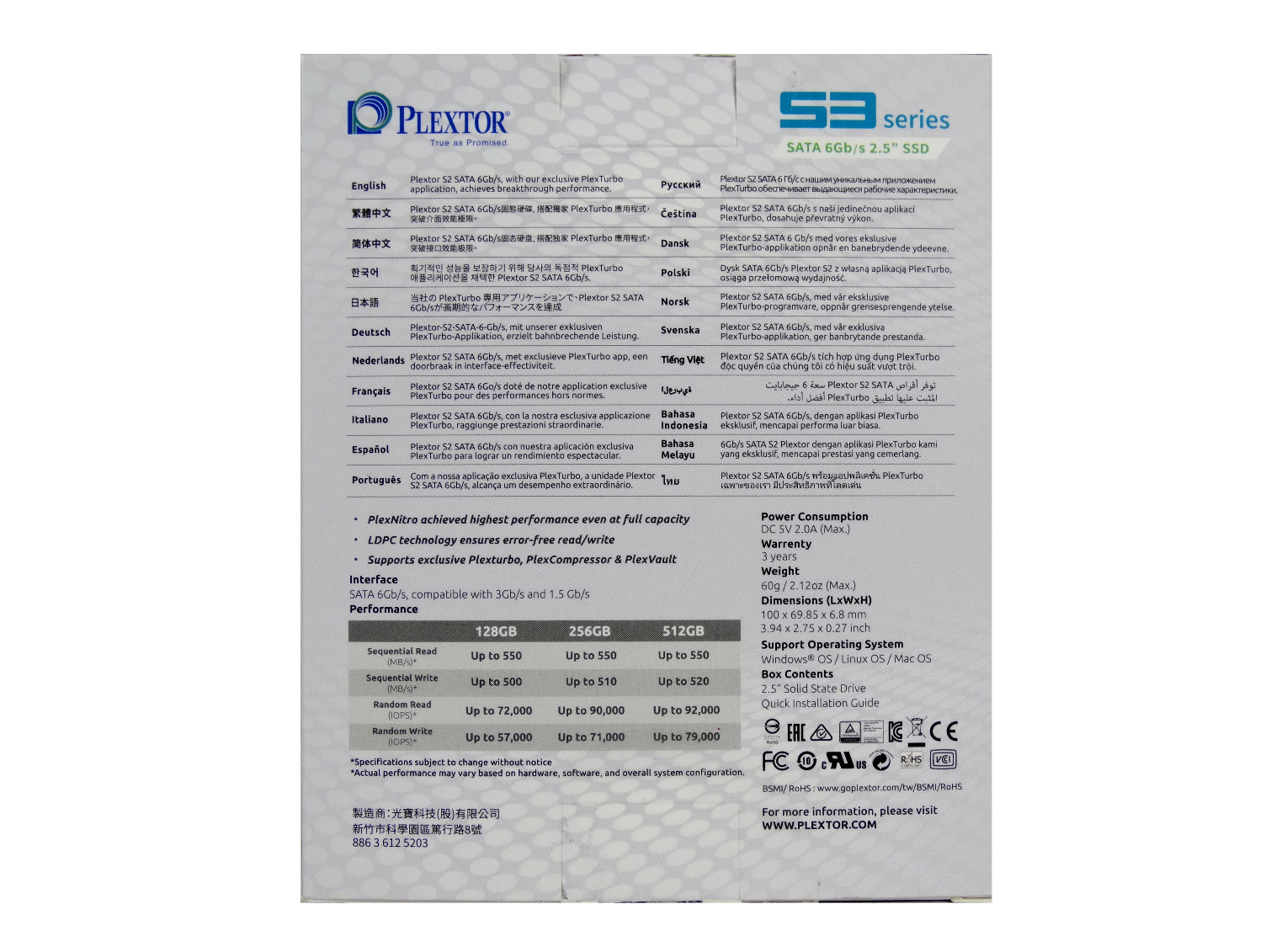
Plextor ships the SC3 with a new look for its SATA products. The new package is similar across the "S" product range. The back side of the package lists the speeds and feeds as well as warranty information. There is very little descriptive information on the package about the drive's other features. We are glad to see performance data listed because many companies have removed the vital information necessary to compare products in a retail store.
A Closer Look
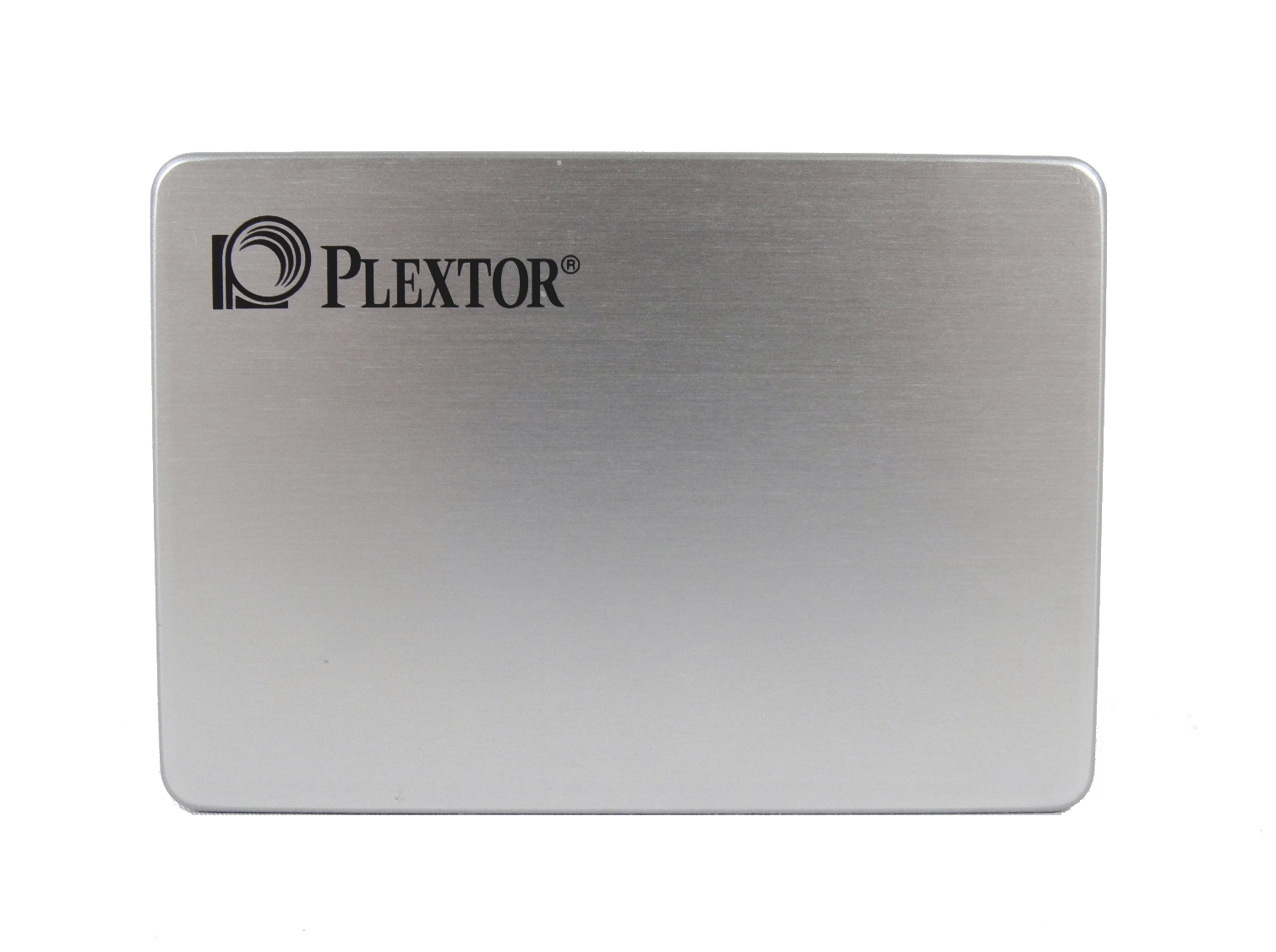
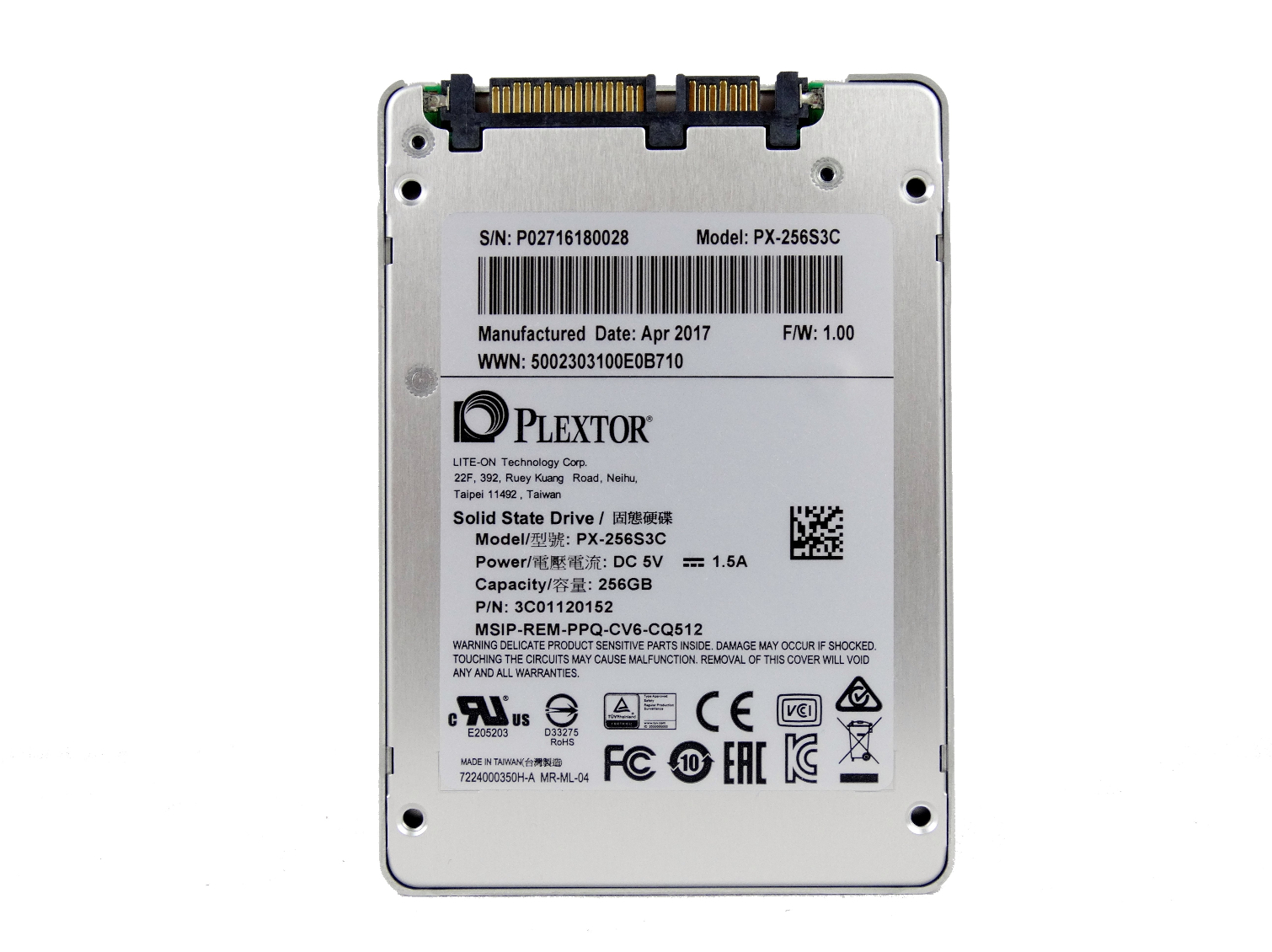
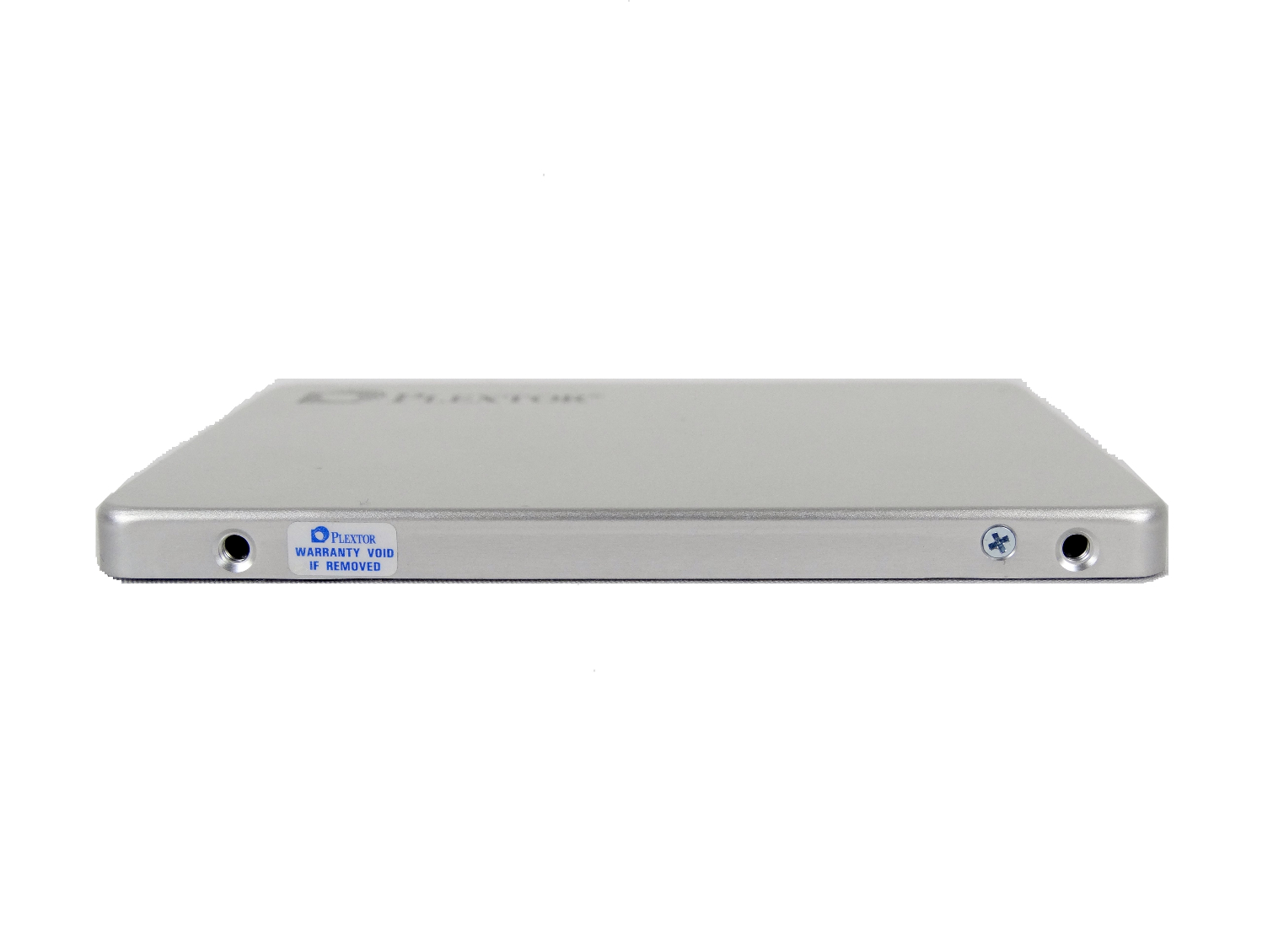

The overall drive design is similar to several Plextor SATA SSDs dating back several years. The brushed aluminum finish is a classic that doesn't need a makeover to look great.
Internal Components

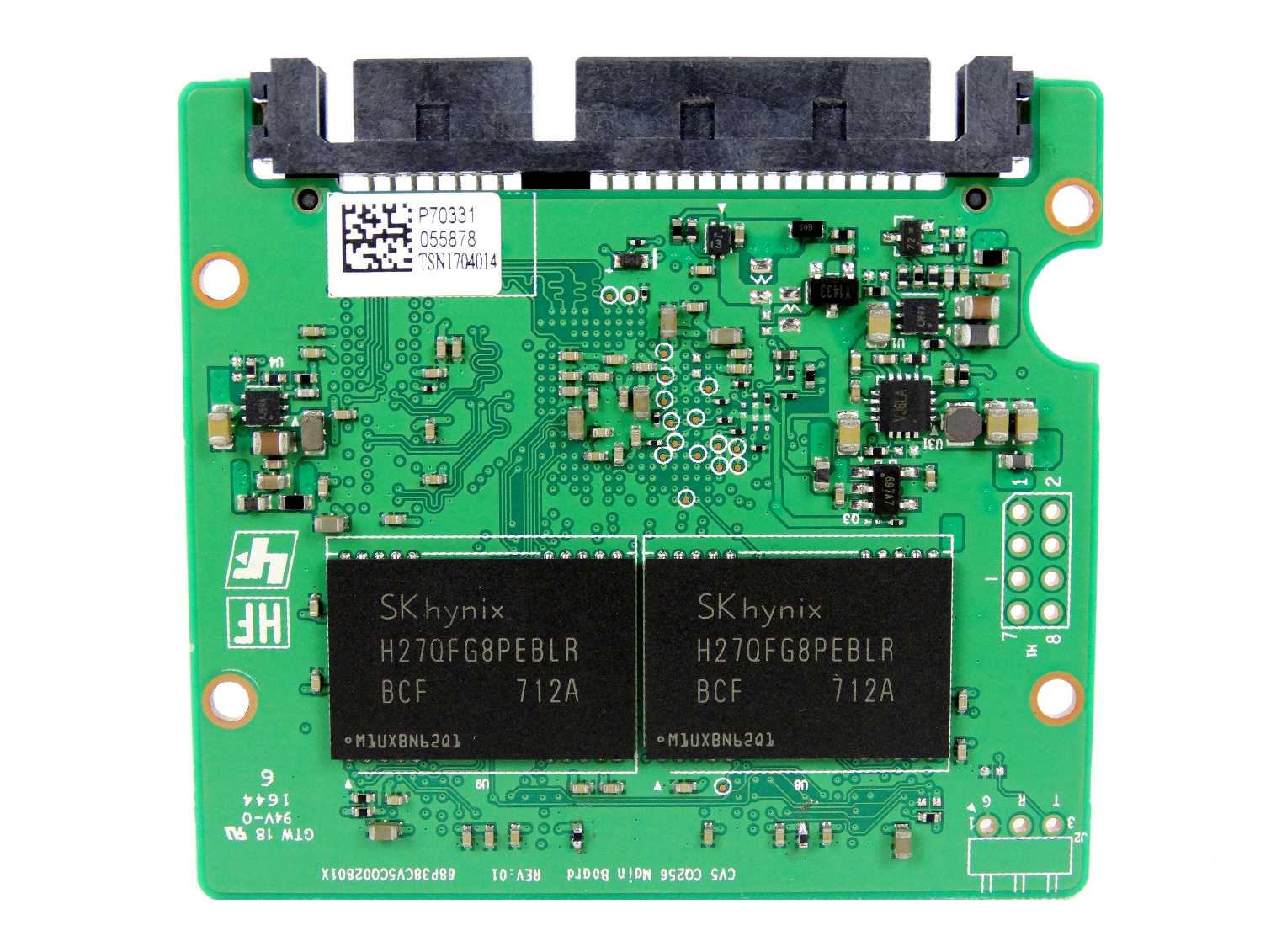
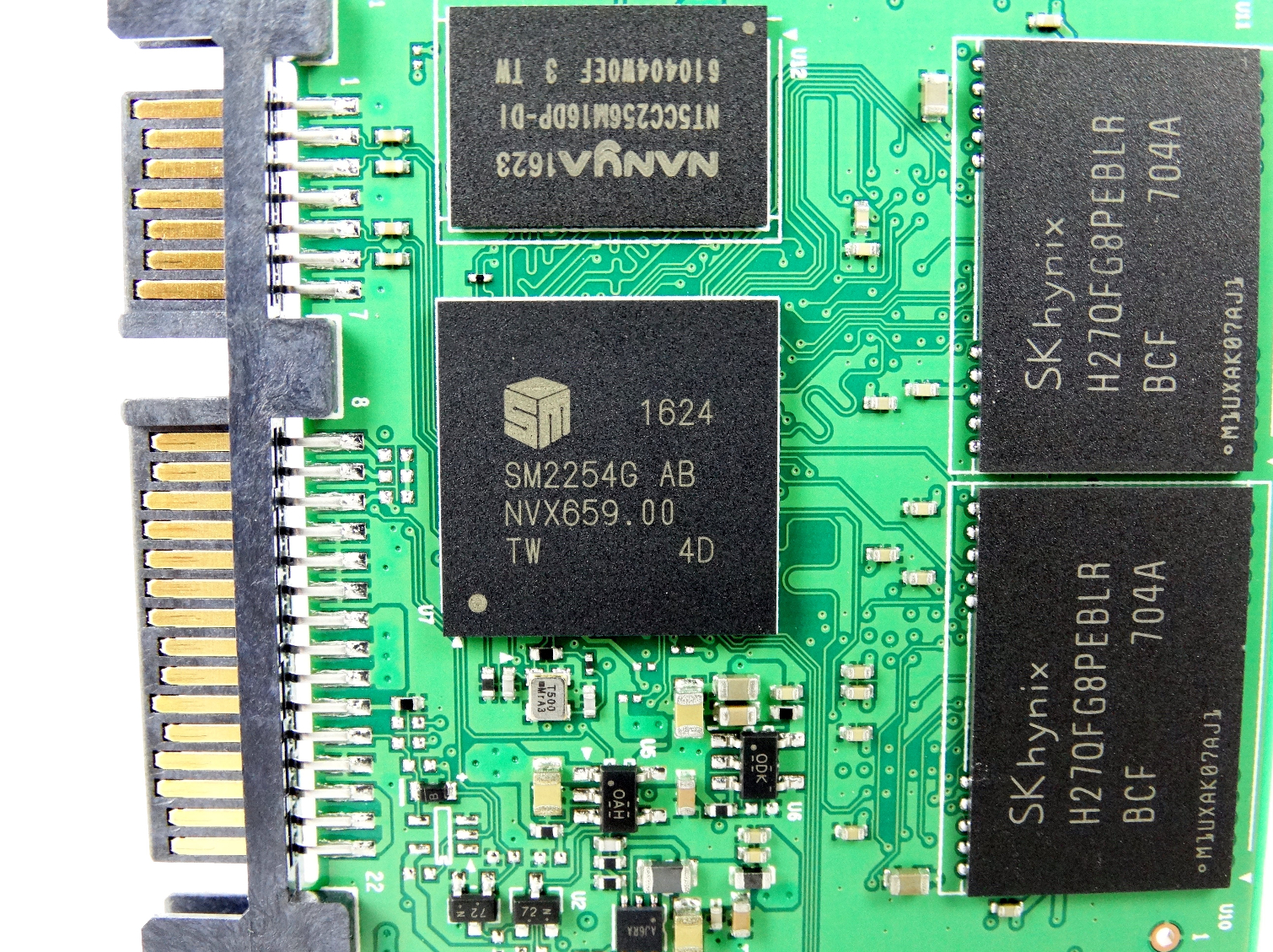

Inside the package, we found the new SMI SM2254 controller paired with a single DRAM package and four Sk Hynix 14nm NAND packages. The drive uses a very small circuit board, and a small thermal pad between the controller and the case helps cool the internal components.
MORE: Best SSDs
MORE: How We Test HDDs And SSDs
MORE: All SSD Content

Chris Ramseyer was a senior contributing editor for Tom's Hardware. He tested and reviewed consumer storage.
-
Martell1977 It seems that no one but Samsung is really looking to improve performance. New SSD's come out and none seem to come close to dethroning the 850 EVO, which has been out for a while now. I'm not complaining, my 850 EVO is great, but I'd think that, as in other markets (like CPU's) new generations would bring more performance...on some level.Reply
Is it just laziness, stagnation, or companies just don't want to put the money into R&D? -
kalmquist I'm guessing that big advantage the EVO has over the competition is the flash memory, combined with a controller that is good enough that it isn't a bottleneck.Reply
I don't think that the continued dominance of Samsung it the result of other companies not investing in R&D. Other companies are spending money on R&D; they just aren't getting the same kind of results as Samsung is. In particular, Micron/Intel, Toshiba/Western Digital, and SK Hynix have all spent heavily to develop 3D NAND flash. The point is that you can spend a lot of money on R&D and end up with something like the AMD Bulldozer design--which worked, but didn't offer much in the way of competition to Intel. -
derekullo You also have to contend with both sata and nvme / pci-express having products that are near the theoretical ceiling of what they can offer.Reply
Sata 3.0 = 6 gigabits per second or 600 megabytes due to unit conversions and taking 8b/10b encoding into account
Samsung 850 Pro has 550 MB/s read and 520 MB/s write
Nvme / pci-express 3.0 x4 link = 3.94 GB/s
For comparison the read speed of the Samsung 960 Pro is 3.5 GB/s
And so the race is to spend millions in research and development to get closer to closing the gap between what you have and the theoretical limit so you can proclaim your product is the fastest.
Or to spend millions in research and development to make the cheapest dollar / gigabyte product in order to saturate your product as the goto SSD for the OEM so the OEM can say their computer is "Powered By A Solid State Drive" allowing them to place bar charts on the box.
QLC would be the best example of this, but really all of the NAND after SLC are examples.
Even a 300 megabyte/s read and write ssd getting 5000 IOPS at a queue depth of 1 can still claim to be 50 times faster more responsive than a 7200 rpm hard drive.
Or they can be even sneakier and compare their 5000 IOPS ssd at a queue depth of 1 and compare it to a 5400 rpm hard drive "in small print of course" and say it is "100 TIMES MORE RESPONSIVE THAN A SPINNING HARD DRIVE DISK" in big bold letters just like that.
They never quote actual speed due to only being able to say 5+ times faster.
50 or 100 times are much better numbers for marketing.
I'd be perfectly content with a 10 Terabyte SSD with 6000 IOPS at a QD of 1 and 300 MB/s read and write at lets say $300.
Even if that was QLC at 500 DWPD that is still 5000 terabytes or 5 petabytes of data.
Allowing me to ditch hard drives forever. -
daglesj I would add that in going from a 550MBps SSD to a 3500MBps Samsung NVMe, in day to day stuff...I cannot tell the difference. There is a limit to the speed benefits. But cheaper and bigger is always nice.Reply -
derekullo Reply20162265 said:I would add that in going from a 550MBps SSD to a 3500MBps Samsung NVMe, in day to day stuff...I cannot tell the difference. There is a limit to the speed benefits. But cheaper and bigger is always nice.
You are absolutely correct.
If your goal is starting a game then games in general don't really load much data to start.
They load alot of small files that need to be processed by the cpu.
Tom's had an article a few years ago that illustrates this beautifully.
http://www.tomshardware.com/reviews/ssd-gaming-performance,2991-11.html
629 megabytes of data needed for Civ5 to start.
Civilization V took 38 seconds to launch but of those 38 seconds the ssd was only busy for 2.15 seconds
Note they used a Sata based ssd, OCZ Vertex 3 240 GB.
With a 3500MBps Samsung NVMe, assuming 960 Pro, the game start time would not be affected by much if any.
The disk busy time would only be 1 second or less followed by 30+ more seconds of waiting for the cpu to catch up.
The only way to really see the difference would be to transfer a multi-gigabyte file between 2 ssd through an interface with a higher than 540 megabytes a second bandwidth, like 10 gigabit ethernet.
540 megabytes a second being the read speed of an 850 Pro.
10 gigabit (1.25 gigabytes a second) would be about 50% saturated from a sata based ssd, like an 850 Pro.
Due to the 10 gigabit limit a Samsung 960 Pro would only appear to be twice as fast as an 850 Pro due to completely saturating the 10 gigabit link.
-
DerekA_C either way it paves the way for future speeds and connections when we start seeing 100gbs=(10%) actual throughput we shall start getting even more CPU and chipset bottleneck. CPU's need to start pushing passed 5ghz base clock @ 8-cores, but question is who will actually push that and the ability to utilize the next phase of DDR5/DDR6 and PCI-E 4.0 and 5.0 slots.Reply -
Jeffs0418 When one considers that the 850evo was released in December of 2014 and still dominates the price segment. It's remarkable that the others are still trying to catch up!Reply
I bought one(250gb) shortly after release for a lot more than they cost now but have no regrets at all.
